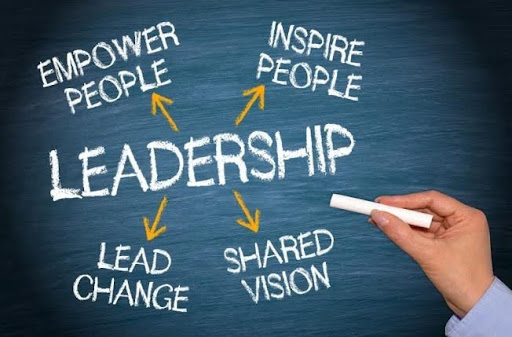Sculpting the Future: Strategies for Building Transformative Leaders
The big lack of leaderships in companies has raised the old question: Are Leaders born or can they be made?

The question of whether leaders are born or made has been a subject of debate for centuries, touching upon deep philosophical, psychological, and social theories.
There isn’t a straightforward answer, but here’s an overview of the main perspectives:
- The “Born Leaders” Perspective (Trait Theory): This viewpoint suggests that certain people are born with innate qualities that predispose them to be leaders. These might include traits such as charisma, intelligence, decisiveness, and social skills. Historically, this perspective was dominant, aligning with the idea of “great men” who were naturally destined for leadership.
- The “Made Leaders” Perspective (Behavioral and Developmental Theories): Over time, the focus shifted towards the idea that leadership skills can be developed. This perspective argues that through education, experience, and effort, individuals can acquire the skills and knowledge necessary to lead effectively. Behavioral theories suggest that it’s not innate traits but rather learned behaviors that make someone a good leader.
- Situational and Contingency Theories: These theories propose that whether someone is a good leader can depend heavily on the context. In some situations, certain innate qualities may come to the fore, while in others, learned skills and adaptability may be more critical. These theories suggest a more nuanced view, where both innate qualities and developed skills play a role, depending on the situation.
- Transformational Leadership: This approach emphasizes the importance of leaders being able to inspire and motivate others towards a common goal. It suggests that while some traits may be helpful, the ability to connect with and inspire others can be developed over time.
- Leadership as a Skill: Modern perspectives often treat leadership as a set of skills that can be taught and learned. This view supports the idea that while some people might have a natural inclination towards leadership due to their personality or early experiences, effective leadership skills—like communication, strategic thinking, empathy, and resilience—can be developed through formal and informal learning processes.
In summary, the contemporary understanding of leadership encompasses both nature and nurture. While certain personality traits may give some individuals a head start in leadership roles, a wide range of leadership skills can be acquired through learning and experience. This more inclusive view suggests that with the right mindset and dedication, leadership capabilities can be developed.
Developing and training leadership skills is a multifaceted process that involves both formal education and practical experiences. Here are several effective methods and best practices for developing leadership capabilities:
- Formal Education and Training Programs:
- Leadership Workshops and Seminars: These are designed to teach specific leadership skills, such as effective communication, conflict resolution, and strategic planning.
- Executive Education Programs: Many universities and business schools offer courses that target mid-career professionals looking to enhance their leadership capabilities.
- Mentorship and Coaching:
- Mentorship Programs: Being mentored by an experienced leader can provide invaluable insights and guidance, helping to navigate challenges and decisions.
- Executive Coaching: Personalized coaching sessions can help identify and develop leadership strengths, as well as address areas for improvement.
- Practical Experience:
- Stretch Assignments: Taking on projects that push the boundaries of current capabilities can encourage growth and learning.
- Leadership Roles in Volunteer Organizations: These positions can offer leadership experience and the opportunity to practice skills in a real-world setting.
- Self-Directed Learning:
- Reading Leadership Literature: Books, articles, and case studies on leadership can provide theoretical knowledge and practical insights.
- Online Courses and Webinars: Many institutions and platforms offer courses on various aspects of leadership, from team management to emotional intelligence.
- Feedback and Reflection:
- 360-Degree Feedback: Gathering feedback from supervisors, peers, and subordinates can offer a comprehensive view of one’s leadership style and effectiveness.
- Reflective Practices: Regularly reflecting on leadership experiences and lessons learned can help in understanding one’s impact and identifying areas for growth.
- Building Emotional Intelligence:
- Emotional Intelligence Training: Programs focusing on self-awareness, self-regulation, social awareness, and relationship management can enhance leadership effectiveness.
- Networking and Peer Learning:
- Leadership Forums and Peer Groups: Engaging with other leaders can provide opportunities to share experiences, challenges, and strategies.
Fast-tracking Leadership Development:
While there’s no shortcut to becoming a great leader, some strategies can accelerate the process:
- Immersive Learning Experiences: Intensive workshops or retreats can provide concentrated learning opportunities.
- Cross-functional Projects: Working on projects that involve different departments or teams can broaden understanding and skills quickly.
- Seeking Out Challenges: Proactively seeking new challenges and responsibilities can hasten the learning curve.
- Leveraging Technology: Utilizing online learning platforms and virtual simulations can provide flexible and diverse learning opportunities.
The best method for any individual depends on their current skills, learning style, and the specific leadership qualities they aim to develop. Combining several of the above methods and maintaining a commitment to continuous learning and self-improvement can produce the best results.
Exploring unconventional approaches, notable figures such as Julian Nagelsmann, the coach of the German Soccer team, alongside prominent organizations like Cisco and McKinsey, have shared remarkable outcomes from integrating horse-assisted training into their leadership development programs.
These entities emphasize the advantages of engaging with horses over traditional classroom-based learning. 
What we found about Horse-assisted training, also known as equine-assisted learning (EAL), it has emerged as a unique and effective method for enhancing leadership development. Horses, as highly sensitive and social animals, can provide immediate feedback on a person’s behavior and emotions, making them excellent partners in leadership training. Here’s how horse-assisted training can accelerate leadership development:
- Enhancing Self-Awareness:
- Horses react to the emotions and body language of the humans around them. Working with horses can help individuals become more aware of their own non-verbal communication and emotional state, which is crucial for effective leadership.
- Improving Communication Skills:
- Since horses do not communicate verbally, individuals must learn to convey their intentions through body language and energy. This experience can improve one’s ability to communicate clearly and effectively, a key leadership skill.
- Building Trust and Respect:
- Leadership involves building trust and respect, both of which are essential when working with horses. Horses must trust and respect a person to follow their lead, mirroring the dynamics of human leadership situations.
- Developing Empathy and Emotional Intelligence:
- Interacting with horses requires empathy and the ability to read and respond to their signals. These experiences can enhance emotional intelligence, making leaders more attuned to the feelings and needs of their team members.
- Learning to Lead Without Force:
- Horses, due to their size and strength, cannot be coerced by force. This teaches leaders the importance of influence rather than power in guiding a team, fostering a more collaborative and empowering leadership style.
- Handling Pressure and Adapting to Situations:
- Horses can behave unpredictably, requiring individuals to remain calm under pressure and adapt to changing situations. This can improve problem-solving skills and resilience, qualities that are vital for leadership.
- Fostering Team Cohesion:
- Many horse-assisted training programs involve group activities, promoting teamwork and collaboration. Participants can learn how to work together more effectively, understanding the dynamics of leading and following within a team.
- Immediate and Honest Feedback:
- Horses provide instant feedback on a person’s approach. If a strategy isn’t working, the horse’s response will make this clear, encouraging a leader to quickly adapt and find new solutions.
- Building Confidence:
- Successfully communicating and working with a horse can significantly boost an individual’s confidence. This newfound confidence can translate into more decisive and assertive leadership.
Horse-assisted trainings present a unique pathway to leadership development, serving as a valuable supplement to conventional methods.
Through activities that demand non-verbal communication, empathy, and adaptability, participants can fast-track their growth in leadership in a deep and enduring manner, with a special emphasis on mastering the most crucial aspect of leadership: understanding and inspiring PEOPLE!
Go To’s: Organizations are encouraged to re-evaluate their leadership development initiatives, embracing unconventional methodologies with an open mind.
Cultivating true leadership qualities, underscored by robust emotional intelligence and effective coaching skills, can foster a dynamic and resilient organizational culture.
Such an environment not only accelerates personal and collective growth but also enhances job satisfaction, creating a vibrant workplace where individuals are empowered to thrive and find fulfillment in their work.
For more insides in equine-assisted learning (EAL) and offerings please contact pm@theIECgroup.com


